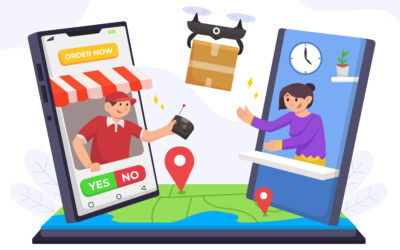A topic that frequently comes up here at FiddlerStudios, and with our clients, is copywriting. According to Wikipedia, “Copywriting is the use of words and ideas to promote a person, business, opinion or idea.” Whether it’s a client that needs the logo we created for their new flyer they’re creating, or the text we have on our own website describing what we offer, copywriting is a part of any business. We ran across some great articles over at copyblogger, that reminded us all of some great writing practices.
So we combined those things with some of our own knowledge and created this graphic to help people understand how to better copywrite (and just how to write better in general, for that matter):
![copywriting-quadrants-2-for-blog[1]](https://wpxpress.com/wp-content/uploads/2011/04/copywriting-quadrants-2-for-blog1.gif)
(Note: if you want to share this image elsewhere, make sure to use this alternate version, which includes a description of quadrant 1)
You’ll notice that there are four things we do in writing: write in abstractions or concrete detail and write features or benefits. Here’s some explanation of each:
Abstractions vs Concrete Detail
One great example to illustrate this concept is “that thing” vs “Bessie, the brown & white milk cow with no horns, coarse hair, and a curious disposition.” “That thing” is very abstract, and fortunately most people don’t write quite that poorly. However, most of us fall into the trap of writing just barely above that level. We simply say “cow” when we mean “Bessie, the brown & white milk cow with no horns, coarse hair, and a curious disposition.”
You might respond, “what’s wrong with that? It is a cow, and it’s much shorter and more efficient.” And you’re right, it is more efficient, and you shouldn’t go describing every single detail. However, pertinent, solid details, draw the reader in. They help the reader to feel like they’re there, like what you’re saying matters and is not just some generality that may or may not be true.
The key is a phrase that writers throw around all the time, but too few really obey: “show, don’t tell.” As another example, I could say “the other day I was watching this live conference on TV. While I found the presenters engaging and very instructional, I was surprised when one guy started speaking and….” Or, I could say “I was reclining on our soft-brown couch, lazily listening to the vocal drone of presenters on the TV screen 10 feet away.
The topic was valuable to me, but I felt my mind slip between interested contemplation and a desire to fall asleep. One older, balding gentleman took the stage and….”
In the 1st example, I would have been solidly on the left side of the graphic: lots of abstractions that more-or-less get the point across, but are unengaging, flat, and often unconvincing. In the 2nd, there was much more concrete detail. One small trick of concrete detail is to make sure you don’t just describe what the scene looks like, also bring in the other 4 senses. Above I described the couch as being soft, and the sound of the presenter’s voices.
That was “touch” and “aural” sense detail. If you can bring in smell and taste too, all the better. All this draws you in, you feel like you’re there with me in the experience. You even want to know what happened next.
Benefits vs Features
Tell me this, is this a benefit or a feature: “saves you time by organizing all your receipts automatically”? If you answered “both” you’re already good at this. Most people are not. Benefits are the advantage of your product or service, to your customer or end-user. Features the functions that your product or service does.
Benefits are by nature often more abstract “saves you time,” while features are more specific “organiz[es] all your receipts automatically” People don’t really care about features. They’re not concerned about having their receipts organized, but if it must be done, they’re interested in the time it can save them, so they can be at the beach surfing or their kid’s t-ball game.
“But didn’t you just say we’re supposed to focus on more details and get away from abstractions?” Yes, and we’ll get to that in a moment. But first, let’s finish exploring Benefits vs Features.
![copywriting-quadrants-1-for-sharing[1]](https://wpxpress.com/wp-content/uploads/2011/04/copywriting-quadrants-1-for-sharing1.gif)
So when you want to sell your freelance services you don’t say “I’ve got all the skills when it comes to writing, I can write about anything you want, and write well. Plus, I received my bachelor’s degree in English from….” Those are features. You want something like “I’ll save you time and worry by taking over your blogging, plus I’ll make your business look good in the process.” They don’t want somebody who can “write about anything,” nor do they care what your credentials are. Everyone wants to save time and worry. They also want to look good or have their business look good.
Moving to Quadrant 1: Combining Benefits & Details
But there’s still a problem: “make your business look good” is still pretty abstract. We’re in quadrant 2 at best. In order to move away from features and abstractions, you tell specific stories and examples of how the product or service helped a certain customer, but make sure to focus on benefits. For example “Through my writing, I’ll show your soon-to-be clients how you were able to help XYZ Corp increase their sales by 17% and completely change their approach to marketing.” So you’re saying “I’ll make your business look good,” but with more specifics, so they can actually picture what it is you’re going to accomplish on their behalf.
If appropriate, use some non-visual sense details (your other 4 senses) to draw the reader into the story. Eg: “Grandpa Smith’s house still smells musty, but he saved years of typing and sorting because our scanner is so easy to use. Now he rests easy in his smooth old leather chair, knowing all his family records & photos are preserved.”
Notice sense-details and benefits (quadrant 1), not features and abstractions (quadrant 4). I didn’t talk about the dpi the scanner scans, a feature, or how it will “help you scan anything you need to,” an abstraction, that just sounds generic and lame. Instead, I gave a very specific example (Grandpa Smith) with a specific benefit (piece of mind because his family records are preserved) to him.
You might wonder how helping Grandpa Smith is going to apply to all your other various customers, but don’t worry about that. Just tell about a specific person, business, or situation and how those benefits were helpful to them. I could even take the above example further and tell how pleased Grandpa Smith was that he saved all that time over using a more difficult scanner, or the money he saved over a more expensive one.
Even though it’s so specific, people will extrapolate on their own: “if it was so easy that even Grandpa Smith could use it, it’ll help my employees immensely, in spite of our completely different use for it.”
If you want to learn a little more about this, we recommend the following excellent articles. The 1st 2 are on abstractions vs details, while the last 2 are features vs benefits.
- “The ‘Common Sense’ Mistake That Makes Your Writing Lifeless” at copyblogger
- “How to Supercharge Your Content With Concrete Details” at copyblogger
- “Marketing Benefits vs. Features: Will it make me late for dinner?” by George Torok
- “Features Vs. Benefits – The Showdown” at IttyBiz (excellent examples, btw)
Good luck with your copywriting and let us know how it goes!





0 Comments